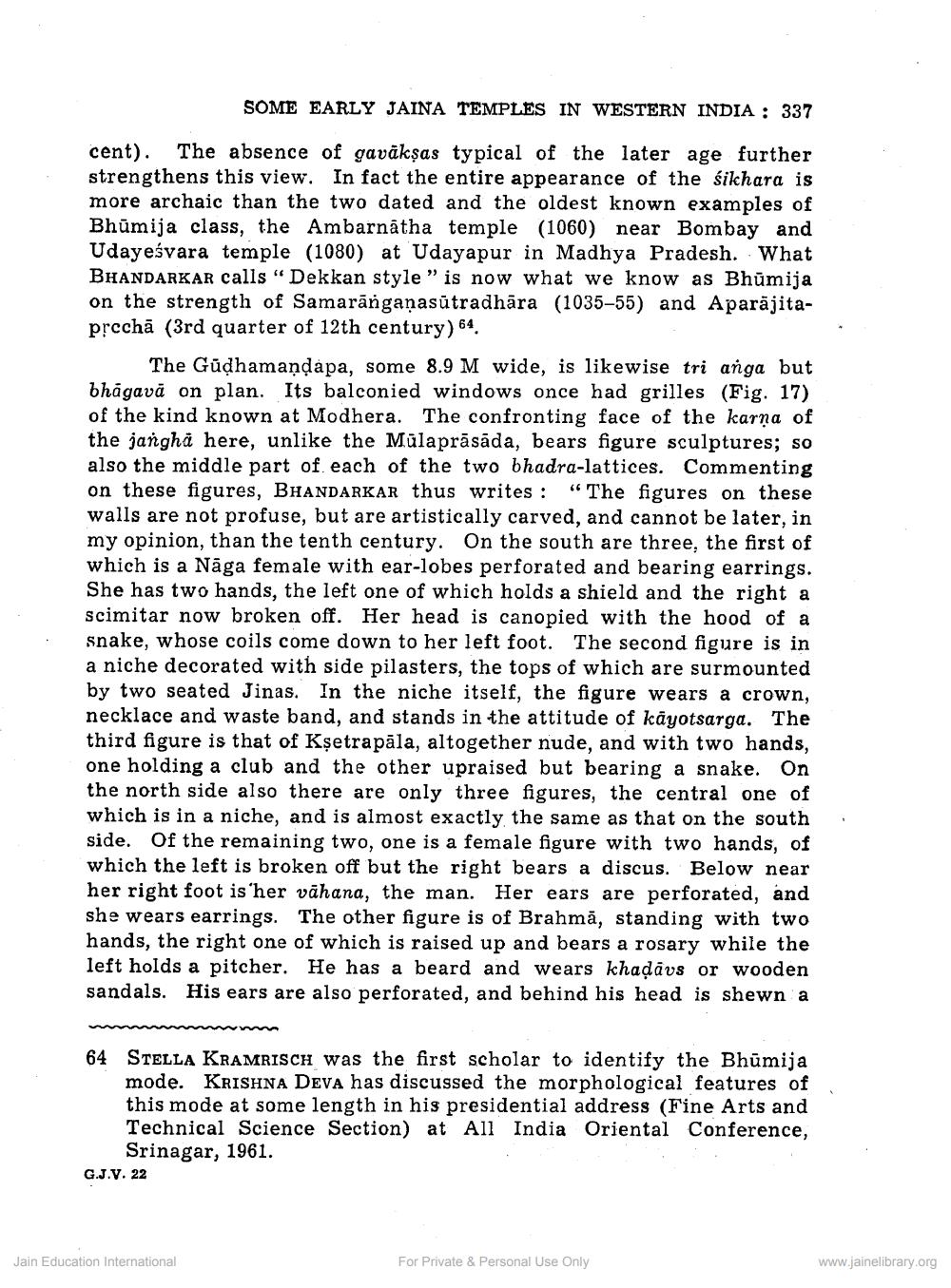________________ SOME EARLY JAINA TEMPLES IN WESTERN INDIA : 337 cent). The absence of gavaksas typical of the later age further strengthens this view. In fact the entire appearance of the sikhara is more archaic than the two dated and the oldest known examples of Bhumija class, the Ambarnatha temple (1060) near Bombay and Udayesvara temple (1080) at Udayapur in Madhya Pradesh. What BHANDARKAR calls "Dekkan style" is now what we know as Bhumija on the strength of Samaranganasutradhara (1035-55) and Aparajitaprccha (3rd quarter of 12th century) 64, The Gudhamandapa, some 8.9 M wide, is likewise tri anga but bhagava on plan. Its balconied windows once had grilles (Fig. 17) of the kind known at Modhera. The confronting face of the karna of the jangha here, unlike the Mulaprasada, bears figure sculptures; so also the middle part of each of the two bhadra-lattices. Commenting on these figures, BHANDARKAR thus writes : "The figures on these walls are not profuse, but are artistically carved, and cannot be later, in my opinion, than the tenth century. On the south are three, the first of which is a Naga female with ear-lobes perforated and bearing earrings. She has two hands, the left one of which holds a shield and the right a scimitar now broken off. Her head is canopied with the hood of a snake, whose coils come down to her left foot. The second figure is in a niche decorated with side pilasters, the tops of which are surmounted by two seated Jinas. In the niche itself, the figure wears a crown, necklace and waste band, and stands in the attitude of kayotsarga. The third figure is that of Ksetrapala, altogether nude, and with two hands, one holding a club and the other upraised but bearing a snake. On the north side also there are only three figures, the central one of which is in a niche, and is almost exactly the same as that on the south side. Of the remaining two, one is a female figure with two hands, of which the left is broken off but the right bears a discus. Below near her right foot is 'her vahana, the man. Her ears are perforated, and she wears earrings. The other figure is of Brahma, standing with two hands, the right one of which is raised up and bears a rosary while the left holds a pitcher. He has a beard and wears khadavs or wooden sandals. His ears are also perforated, and behind his head is shewn a 64 STELLA KRAMRISCH was the first scholar to identify the Bhumija mode. KRISHNA DEVA has discussed the morphological features of this mode at some length in his presidential address (Fine Arts and Technical Science Section) at All India Oriental Conference, Srinagar, 1961. G.J.V. 22 Jain Education International For Private & Personal Use Only www.jainelibrary.org




